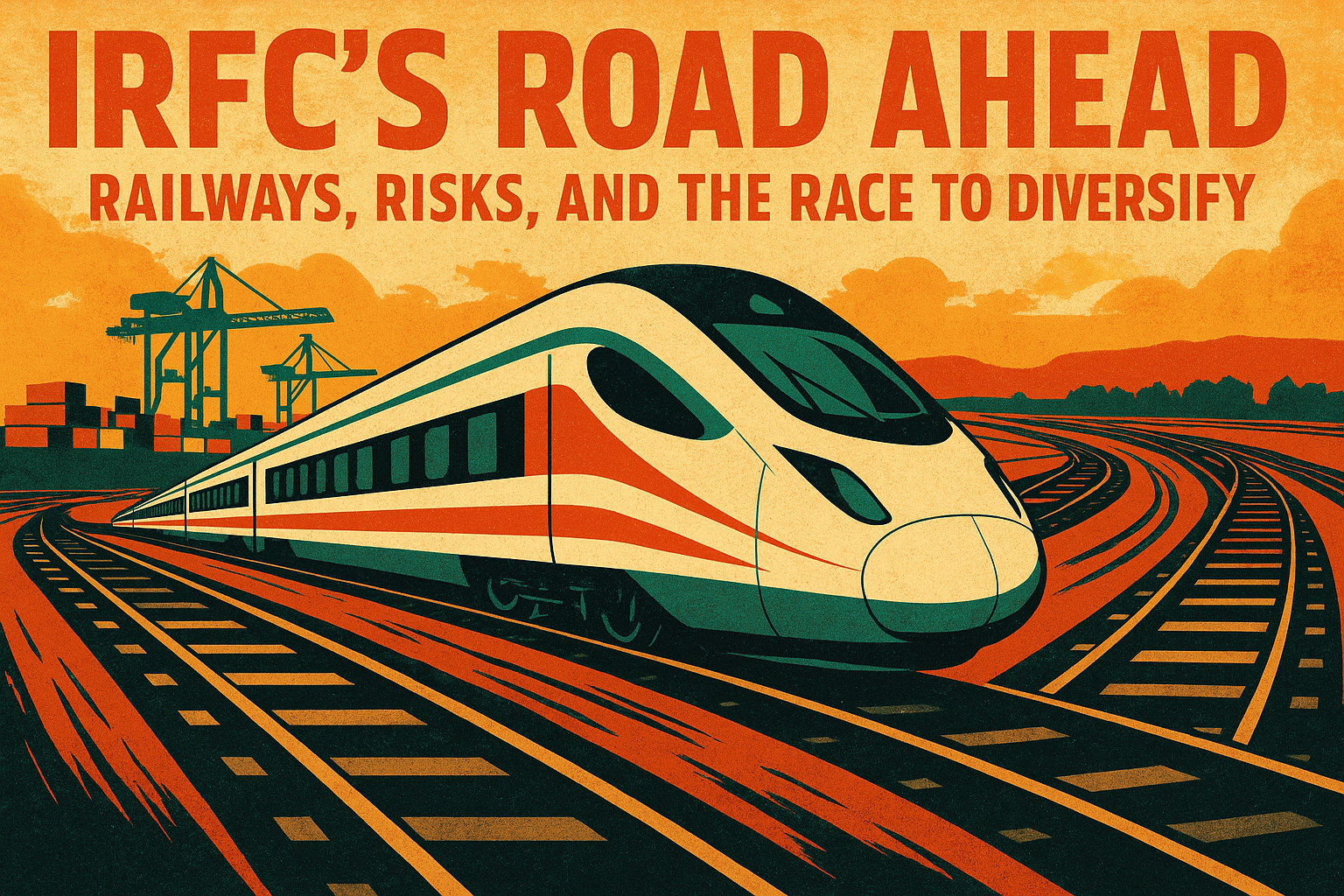
After a brief lull in investor sentiment, railway-linked stocks in India are once again gaining momentum. The renewed optimism is driven by sustained order inflows and a buoyant market outlook, with notable companies like RailTel Corporation, Rail Vikas Nigam Ltd, and RITES Ltd registering over 20% gains in the past month. Indian Railway Finance Corporation Ltd (IRFC), the dedicated financing arm of Indian Railways, is also riding this resurgence—but its trajectory is more nuanced.
A Mixed Bag for IRFC’s Stock Performance
IRFC has shown signs of a rebound, gaining 8.8% on the NSE over the past five trading sessions and rising 4.29% over the past month. This upswing follows the government’s nod for IRFC to raise up to ₹10,000 crore through deep discount bonds—an encouraging development for investors.
However, the optimism is tempered by a broader view of the stock’s performance. Despite recent gains, IRFC is still down over 20% year-on-year, reflecting lingering investor concerns around its stagnating financials and shifting relevance within India’s railway financing ecosystem.
Revenue Woes Amid Policy Shifts
At the heart of IRFC’s underperformance lies a significant issue—declining disbursements. Revenue growth plunged to just 1.9% in FY25, a stark contrast to the 19% average growth seen between FY21 and FY24. Net profit growth also slowed to a mere 1.4%, after touching highs of 38% in earlier years.
A closer look reveals that IRFC’s revenues are being squeezed by a decline in extra budgetary resource (EBR) allocations to Indian Railways. While the Union Budget earmarked a record ₹2.52 lakh crore for Indian Railways for both FY25 and FY26, a vast majority—over 96%—comes from gross budgetary support (GBS), leaving little room for EBRs, traditionally IRFC’s primary channel of deployment.
For instance, EBR allocations fell from 77% of the railway budget in FY21 to just 4% in FY25 and FY26. With no significant EBR requirements in FY24 or FY25, IRFC’s core lending model has come under stress, triggering a sharp slowdown in revenue and profit growth.
A Strategic Pivot: Beyond the Rails
In response, IRFC is now embarking on a much-needed strategic pivot. The company is actively seeking to diversify its loan book beyond Indian Railways into infrastructure segments with strong forward and backward linkages to the railway sector.
Some of the initiatives include:
- Financing port-rail connectivity and logistics projects.
- Funding rolling stock, metro and rapid transit systems.
- Lending to renewable energy ventures and public-private partnerships.
In the past three months alone, IRFC has secured ₹14,000 crore in non-railway assets through three major bids. These projects are expected to offer a higher yield—100 basis points, compared to the typical 40 bps spread from Indian Railways. This could elevate its net interest margin from 1.4% to 2%, significantly boosting profitability.
Recent deals include a ₹3,200 crore loan to Patratu Vidyut Utpadan Nigam and a ₹7,500 crore rupee term loan to NTPC Renewable Energy Ltd. Although non-railway assets currently account for less than 1% of IRFC’s portfolio, the company anticipates a sharp rise in their share, positioning them as a critical growth engine.
Still Anchored to Railways’ Growth
Despite its diversification ambitions, IRFC’s core strength remains deeply linked to the Indian Railways. The government’s massive capex push—which includes 200 new Vande Bharat trains, 100 Amrit Bharat trains, and a freight target of 1.6 billion tonnes—ensures IRFC will continue to play a pivotal role in India’s rail modernization.
This means that even in the absence of EBR allocations, IRFC is likely to benefit indirectly from higher budgetary spends on railway infrastructure, providing a cushion as it transitions into new sectors.
Strong Fundamentals, Low Risk Profile
IRFC’s conservative lending model, backed by its relationship with the Ministry of Railways, keeps its operational risks low. With a 99-100% operating margin and a 24% net profit margin, the company maintains enviable financial metrics. Its low operating expenses, tax-exempt status, and low borrowing costs further strengthen its bottom line.
The company holds ₹6,143 crore in cash reserves and has sanctioned credit lines worth ₹7,417 crore, providing ample liquidity to pursue diversification. Importantly, since its major borrower is a sovereign entity, IRFC carries zero non-performing assets—offering unmatched credit stability.
Looking ahead, lease payments from older agreements are set to kick in as moratoriums expire, ensuring stable income for at least the next two years. This provides a crucial window for IRFC to implement its diversification plans.
Cautious Optimism Amid Strategic Transformation
While IRFC’s financial slowdown has triggered short-term concerns, its ongoing transformation could pave the way for long-term growth. By venturing into sectors that complement its railway heritage, IRFC is broadening its horizons without losing its strategic edge.
Still, risks remain. Rating agencies like ICRA have flagged the likelihood of increased risk-weighted assets and the potential need for fresh capital infusion if loan growth outpaces internal accruals.
For now, IRFC stands at a crossroads—its fundamentals remain strong, but its earnings trajectory is under pressure. Investors will need to monitor how swiftly the company can convert its strategic realignment into tangible financial gains.
Conclusion
IRFC’s future hinges on execution. Its strategic shift toward a more diversified asset base holds promise, but sustained stock re-rating will depend on the pace and profitability of this transformation.
Investors will need to weigh the safety of IRFC’s sovereign-backed core business against the uncertainty and potential upside of its new ventures. As India’s railway infrastructure booms, IRFC may yet find a way to reinvent itself—riding the rails into a new era of growth.
 After a brief lull in investor sentiment, railway-linked stocks in India are once again gaining momentum. The renewed optimism is driven by sustained order inflows and a buoyant market outlook, with notable companies like RailTel Corporation, Rail Vikas Nigam Ltd, and RITES Ltd registering over 20% gains in the past month. Indian Railway Finance Corporation Ltd (IRFC), the dedicated financing arm of Indian Railways, is also riding this resurgence—but its trajectory is more nuanced.
After a brief lull in investor sentiment, railway-linked stocks in India are once again gaining momentum. The renewed optimism is driven by sustained order inflows and a buoyant market outlook, with notable companies like RailTel Corporation, Rail Vikas Nigam Ltd, and RITES Ltd registering over 20% gains in the past month. Indian Railway Finance Corporation Ltd (IRFC), the dedicated financing arm of Indian Railways, is also riding this resurgence—but its trajectory is more nuanced.

